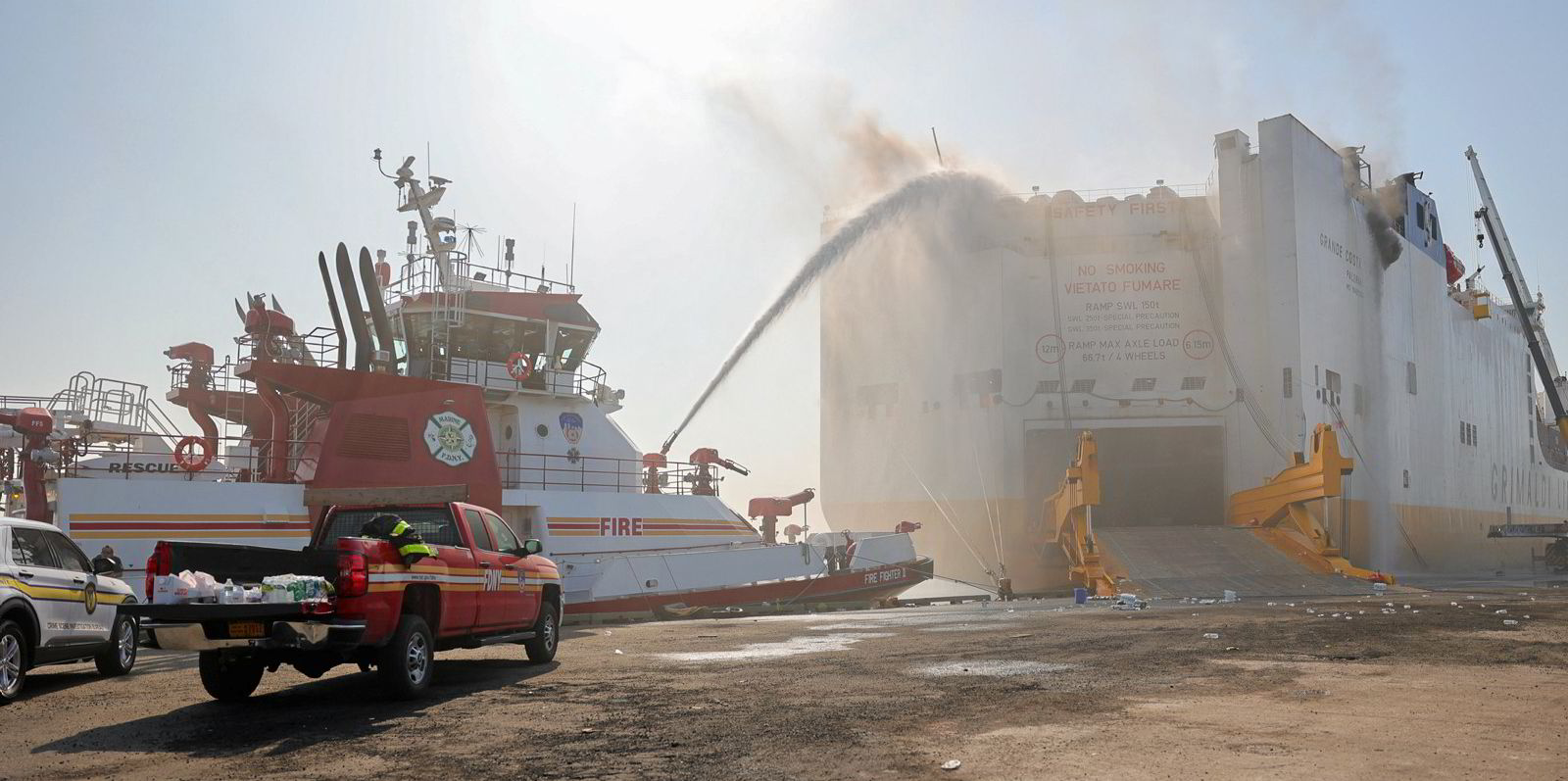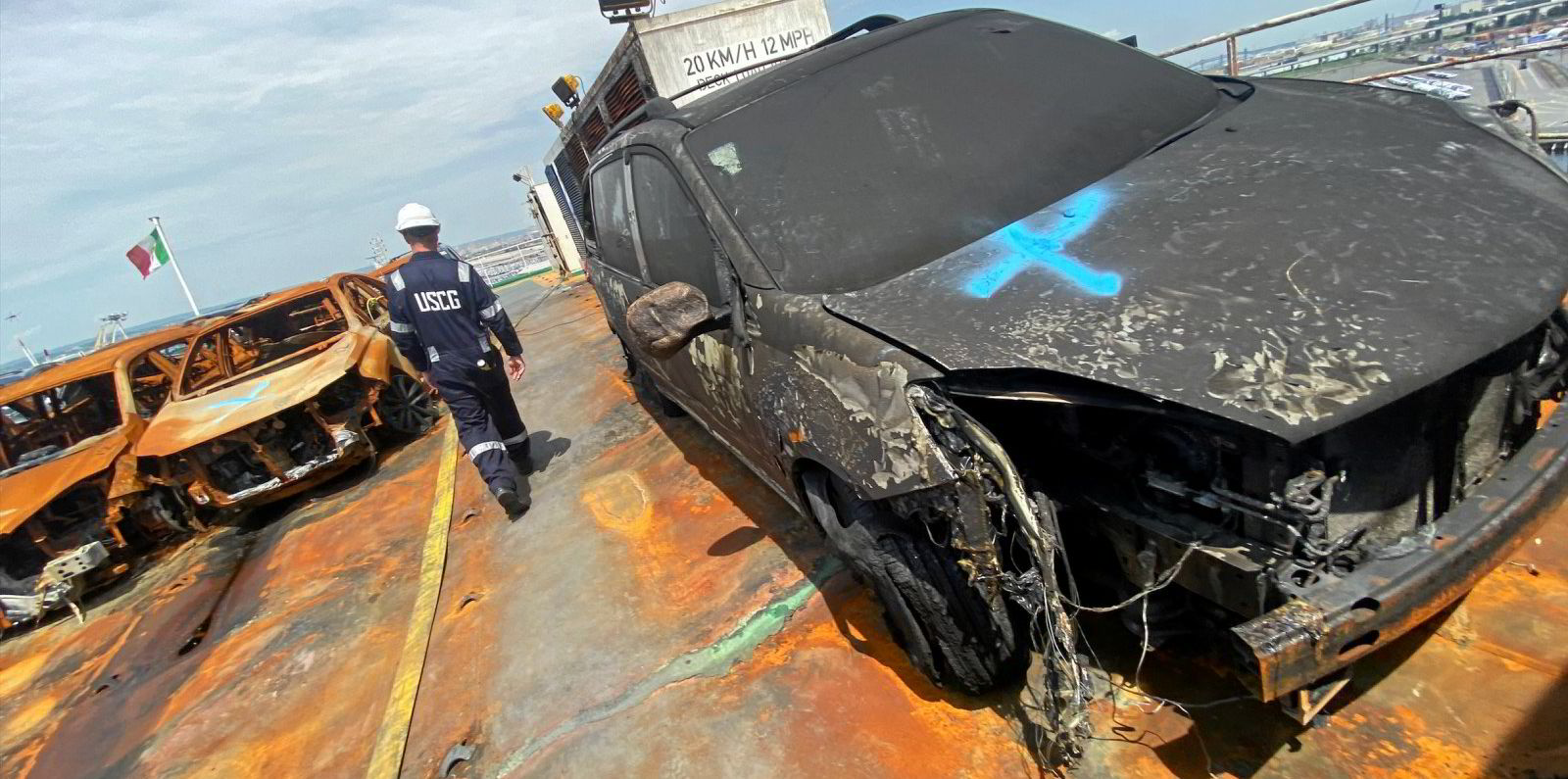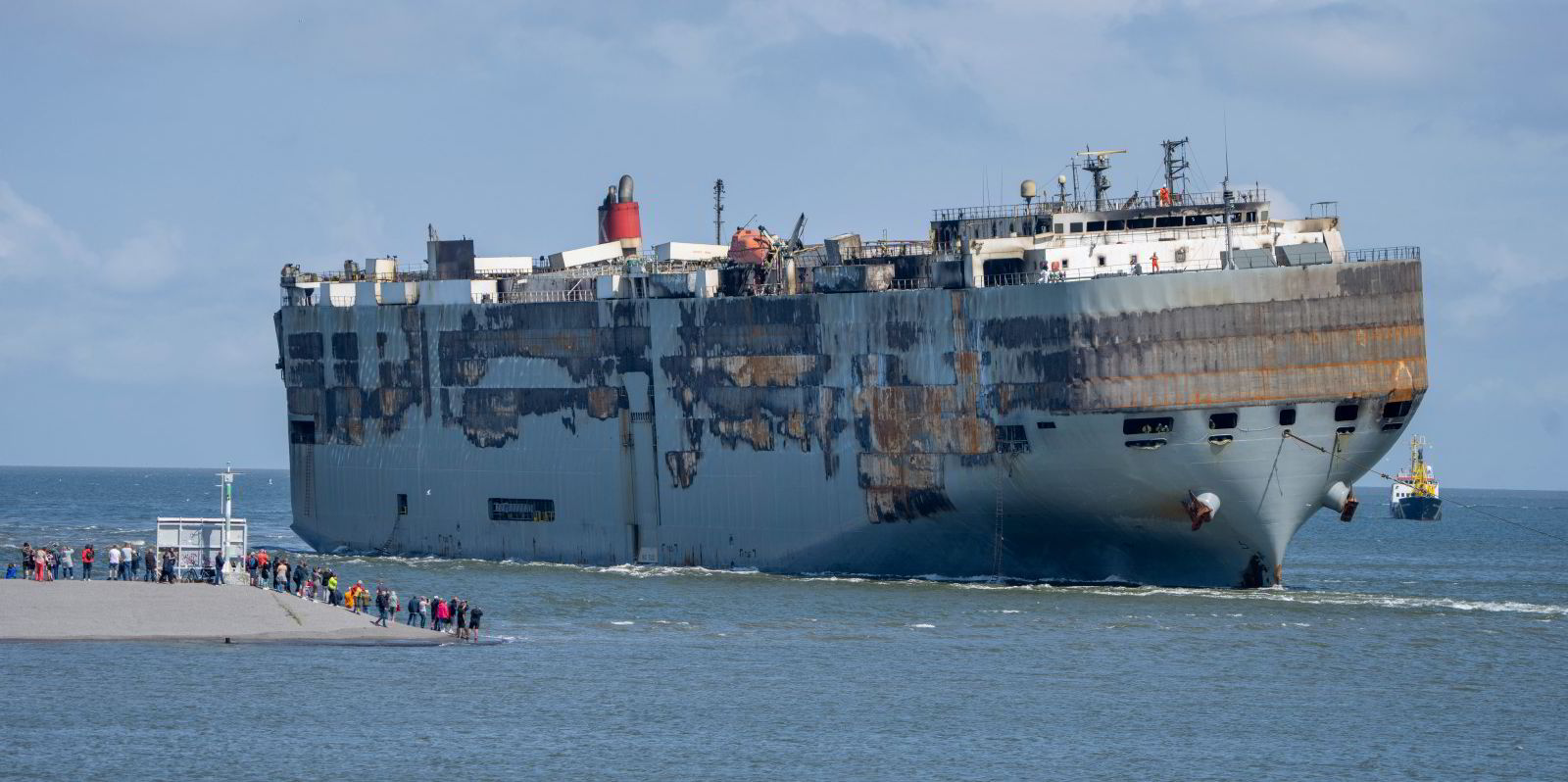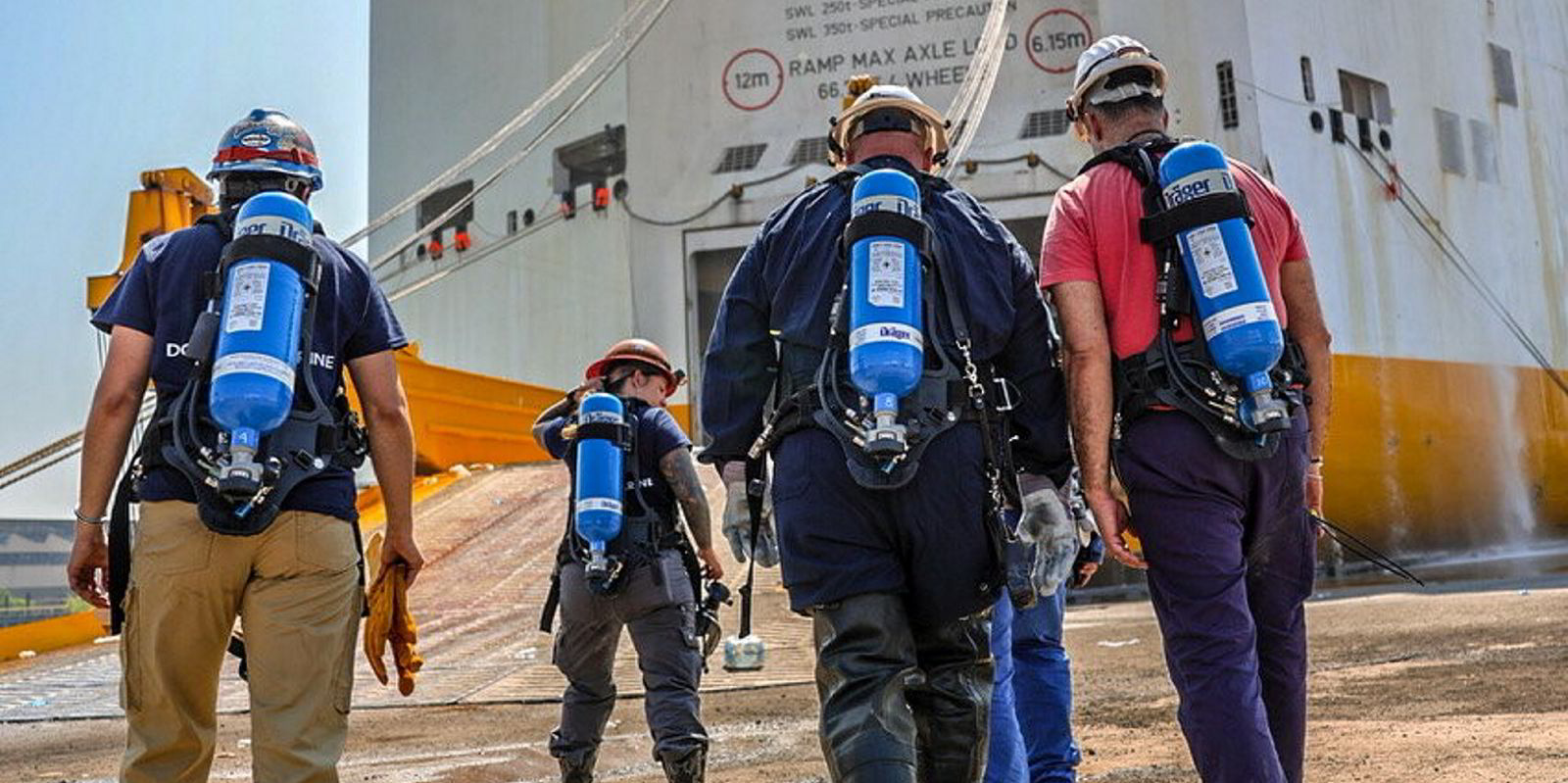If there is one thing recent fires on vehicle carriers and ro-ros have shown, it is that petrol-powered cars and electric vehicles both can spark and fuel a costly — and more importantly deadly — inferno.
EVs, which have received high-profile scrutiny as car carrier fires stand out among major marine casualties, are seen as a possible culprit on the 6,200-ceu Fremantle Highway (built 2013), where one seafarer died when it caught fire in July. But the jury is still out on the cause of the fire, and the vast majority of the vehicles on the ships had traditional internal combustion engines.
There were no electric cars on the 3,950-lane-metre Grande Costa d’Avorio (built 2011) when it caught fire earlier in the month off New Jersey, killing two Newark firefighters, and lawyers for operator Grimaldi Deep Sea are pointing to a petrol-fuelled Jeep Wrangler that was being used to move vehicles onto the vessel — a combination ro-ro container ship — as the possible spark that lit the blaze.
So that fire may not have been caused by the ship’s cargo at all.
Investigations for both deadly incidents have just started, but they highlight the need to tackle the fire dangers associated with vehicle transportation.
It should be noted that vessel casualties overall have been on the decline, and while fires are the second largest cause of total vessel losses in 2022, only a minority of those incidents involved car carriers.
But the tragic loss of a seafarer and of shoreside firefighters, in addition to injuries in Newark, loss of cargo and vessel damage, adds to the imperative to tackle the problem.
The International Maritime Organization’s Sub-Committee on Carriage of Cargoes and Containers is gearing up to grapple with the topic in a September meeting.
Heogh Xiamen
That gathering will come more than a year after the US delegation urged the IMO to close an inspection loophole that could have helped prevent the 2020 fire on the 4,902-ceu pure car/truck carrier Hoegh Xiamen (built 2010), which injured several firefighters in Jacksonville, Florida.
The US has been seeking amendments to the International Maritime Dangerous Goods Code exceptions for vehicle shipping from inspections that could have spotted that used car batteries were not properly disconnected and secured.
Since the subcommittee’s last meeting, the US has been coordinating a correspondence group, but its members struggled to find consensus on several issues.
According to a document filed by the US delegation, even the definition of key terms to distinguish new, used and damaged vehicles proved a “contentious” discussion.
Some areas of agreement
For new vehicles, the group did agree that regulations should be different for cars that roll onto vessels and that are shipped in containers, and a majority agreed that better labelling of vehicles’ fuel type would be useful.
But there was no consensus on many points of what to do with EVs. There was majority agreement that state of charge is important to prevent thermal runway incidents, but not on a limit without further research, and general agreement that it is important to protect electric car batteries from short circuits.
When it comes to shipping damaged vehicles, consensus was also difficult, although the correspondence group’s majority was in favour of requiring fuel to be drained and batteries disconnected.

The US IMO delegation, along with other participants, has urged the cargo and containers subcommittee to establish a new working group to move the discussion forward. The body must take steps to advance the discussion.
But the possibility that the Grande Costa d’Avorio fire was sparked by a Jeep moving vehicles onto the vessel highlights that other regulatory solutions may also be in order.
A US Coast Guard official told TradeWinds that training of shoreside firefighters will be explored in an investigation.
Questions of vessels’ firefighting capability at sea are also worth probing.
In a July Q&A for customers, Allianz noted that malfunctioning lithium-ion batteries are a growing risk for both container ships and car carriers.
“Most ships lack the suitable fire protection, firefighting capabilities and detection systems to tackle such fires at sea, which has been made more difficult by the dramatic increase in ship size,” the insurer said.
And as shown by the Grande Costa d’Avorio fire and European Union-funded research recently highlighted by the International Union of Marine Insurance, car carrier fires involving internal combustion vehicles can be just as intense and deadly as those sparked by EVs.
Keeping our attention on electric cars alone will not solve the problem.





